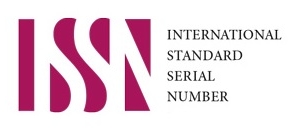Keywords cloud
5. Assessment of risk of toxic damage to people in case of a launch vehicle accident at flight
Page: Kosm. teh. Raket. vooruž. 2024, (1); 40-50
DOI: https://doi.org/10.33136/stma2024.01.040
Language: English
Key words: launch vehicle, critical failure, flight accident, zone of toxic damage to people, zone of dangerous impact of the failed launch vehicle, risk of toxic damage to people.
- Hladkiy E. H. Protsedura otsenky poletnoy bezopasnosti raket-nositeley, ispolzuyuschaya geometricheskoe predstavlenie zony porazheniya obiekta v vide mnogougolnika. Kosmicheskaya technika. Raketnoe vooruzhenie: sb. nauch.-techn. st. Dnepropetrovsk: GP «KB «Yuzhnoye», 2015. Vyp. 3. S. 50 – 56. [Hladkyi E. Procedure for evaluation of flight safety of launch vehicles, which uses geometric representation of object lesion zone in the form of a polygon. Space Technology. Missile Weapons: Digest of Scientific Technical Papers. Dnipro: Yuzhnoye SDO, 2015. Issue 3. Р. 50 – 56. (in Russian)].
- Hladkiy E. H., Perlik V. I. Vybor interval vremeni blokirovki avariynogo vyklucheniya dvigatelya na nachalnom uchastke poleta pervoy stupeni. Kosmicheskaya technika. Raketnoe vooruzhenie: sb. nauch.-tech. st. Dnepropetrovsk: GP «KB «Yuzhnoye», 2011. Vyp. 2. s. 266 – 280. [Hladkyi E., Perlik V. Selection of time interval for blocking of emergency engine cut off in the initial flight leg of first stage. Space Technology. Missile Weapons: Digest of Scientific Technical Papers. Dnipro: Yuzhnoye SDO, 2011. Issue 2. Р. 266 – 280. (in Russian)].
- Hladkiy E. H., Perlik V. I. Matematicheskie modeli otsenki riska dlya nazemnykh obiektov pri puskakh raket-nositeley. Kosmicheskaya technika. Raketnoe vooruzhenie: sb. nauch.-techn. st. Dnepropetrovsk: GP «KB «Yuzhnoye», 2010. Vyp. 2. S. 3 – 19. [Hladkyi E., Perlik V. Mathematic models for evaluation of risk for ground objects during launches of launch-vehicles. Space Technology. Missile Weapons: Digest of Scientific Technical Papers. Dnipro: Yuzhnoye SDO, 2010. Issue 2. P. 3 – 19. (in Russian)].
- NPAOP 0.00-1.66-13. Pravila bezpeki pid chas povodzhennya z vybukhovymy materialamy promyslovogo pryznachennya. Nabrav chynnosti 13.08.2013. 184 s [Safety rules for handling explosive substances for industrial purposes. Consummated 13.08.2013. 184 p.
(in Ukranian)]. - AFSCPMAN 91-710 RangeSafetyUserRequirements. Vol. 1. 2016 [Internet resource]. Link : http://static.e-publishing.af.mil/production/1/afspc/publicating/
afspcman91-710v1/afspcman91-710. V. 1. pdf. - 14 CFR. Chapter III. Commercial space transportation, Federal aviation administration, Department of transportation, Subchapter C – Licensing, part 417 – Launch Safety, 2023 [Internet resource]. Link: http://law.cornell.edu/cfr/text/14/part-417.
- 14 CFR. Chapter III. Commercial space transportation, Federal aviation administration, Department of transportation, Subchapter C – Licensing, part 420 License to Operate a Launch Site. 2022 [Internet resource]. Link: http://law.cornell.edu/cfr/text/14/part-420.
- ISO 14620-1:2018 Space systems – Safety requirements. Part 1: System safety.
- 9 GOST 12.1.005-88. Systema standartov bezopasnosti truda. Obschie sanitarno-gigienicheskie trebovaniya k vozdukhu rabochei zony. [GOST 12.1.005-88. Labor safety standards system. General sanitary and hygienic requirements to air of working zone].
- 10 Rukovodyaschiy material po likvidatsii avarijnykh bolshykh prolivov okislitelya АТ (АК) i goruchego NDMG. L.:GIPKh, 1981, 172 s. [Guidelines on elimination of large spillages of oxidizer NTO and fuel UDMH. L.:GIPH, 1981, 172 p. (in Russian)].
- 11 Kolichestvennaya otsenka riska chimicheskykh avariy. Kolodkin V. M., Murin A. V., Petrov A. K., Gorskiy V. G. Pod red. Kolodkina V. M. Izhevsk: Izdatelskiy dom «Udmurtskiy universitet», 2001. 228 s. [Quantitative risk assessment of accident at chemical plant. Kolodkin V., Murin A., Petrov A., Gorskiy V. Edited by Kolodkin V. Izhevsk: Udmurtsk’s University. Publish house, 2001. 228 p. (in Russian)].
Full text (PDF) || Content 2024 (1)
| Country | City | Downloads |
|---|---|---|
| USA | Ashburn; Mountain View; Buffalo; Buffalo; Las Vegas; San Jose; Chicago; Chicago; Saint Louis; Saint Louis;; New York City; Buffalo; Buffalo; Buffalo; Buffalo; Los Angeles; Chicago; Columbus; Ashburn; Ashburn; Dallas; New Haven; New Haven; Buffalo; Phoenix; Phoenix; Phoenix; Phoenix; Phoenix; Phoenix; Phoenix; Phoenix; Phoenix; Phoenix; Phoenix; Phoenix; Phoenix; Phoenix; Chicago; San Francisco; Los Angeles; San Francisco; El Monte; Seattle; Ashburn; North Charleston; Mountain View; Mountain View; Portland; Portland; Portland; San Mateo; Ashburn; Ashburn; Pompano Beach | 56 |
| China | Pekin; Fuzhou;; Shenzhen; Pekin; Hangzhou | 6 |
| Germany | Falkenstein; Düsseldorf; Falkenstein; Leipzig; Leipzig | 5 |
| Canada | Toronto; Toronto; Toronto; Toronto; Toronto | 5 |
| Singapore | Singapore; Singapore; Singapore; Singapore | 4 |
| The Republic of Korea | Seoul;; Seoul | 3 |
| France | ; Paris | 2 |
| Unknown | ; | 2 |
| Romania | 1 | |
| India | 1 | |
| Netherlands | Amsterdam | 1 |
| Ukraine | Kremenchuk | 1 |
15. Topical Issues of Creation of Space Rocket Thermostatic System Mating Points
Yangel Yuzhnoye State Design Office, Dnipro, Ukraine1; State Enterprise DINTEM Ukrainian Research Design-Technological Institute of Elastomer Materials and Products2
Page: Kosm. teh. Raket. vooruž. 2018 (2); 132-138
DOI: https://doi.org/10.33136/stma2018.02.132
Language: Russian
Key words: planetary roving vehicle, self-propelled modular platform, generic module, interchangeability
Full text (PDF) || Content 2018 (2)
| Country | City | Downloads |
|---|---|---|
| USA | Boardman; Matawan; Baltimore; Plano; Dublin; Ashburn; Columbus; Phoenix; Phoenix; Phoenix; Phoenix; Phoenix; Phoenix; Phoenix; Phoenix; Phoenix; Phoenix; Phoenix; Phoenix; Phoenix; Phoenix; Phoenix; Monroe; El Monte; Ashburn; Ashburn; Seattle; Seattle; Ashburn; Quinton; Quinton; Seattle; Seattle; Tappahannock; Portland; Portland; Portland; San Mateo; San Mateo; Des Moines; Boardman; Boardman; Ashburn; Ashburn; Ashburn; Boardman; Ashburn; Pompano Beach | 48 |
| Singapore | Singapore; Singapore; Singapore; Singapore; Singapore; Singapore; Singapore; Singapore; Singapore; Singapore; Singapore | 11 |
| Canada | Toronto; Toronto; Toronto; Toronto; Toronto; Monreale | 6 |
| Ukraine | Dnipro; | 2 |
| Finland | Helsinki | 1 |
| Unknown | 1 | |
| France | Paris | 1 |
| Philippines | Mandaluyong City | 1 |
| Germany | Falkenstein | 1 |
| Romania | Voluntari | 1 |
| Netherlands | Amsterdam | 1 |
5. Methodology of Normative Principles of Justification of Launch Vehicle Launching Facility Structures Lifetime
The Institute of Technical Mechanics, Dnipro, Ukraine1; Yangel Yuzhnoye State Design Office, Dnipro, Ukraine2; Oles Honchar Dnipro National University, Dnipro, Ukraine3
Page: Kosm. teh. Raket. vooruž. 2019, (1); 28-37
DOI: https://doi.org/10.33136/stma2019.01.028
Language: Russian
Key words: classification of loads and failures; shock wave, acoustic and thermal loads; low-cycle fatigue; hierarchical approach in classification; projection-iterative schemes of numerical procedur
1. Vidy startovykh kompleksov: GP KB «Yuzhnoye»: Rezhim dostupa. http://www.yuzhnoe.com/presscenter/media/ photo/techique/launch-vehique.
2. Modelyuvannya ta optimizatsia v nermomechanitsi electroprovidnykh neodnoridnykh til: u 5 t. / Pid. zag. red. akad. NANU R. M. Kushnira. Lvyv: Spolom, 2006–2011. T. 1: Termomechanika bagatokomponentnykh til nyzkoi electroprovodnosti. 2006. 300 p. T. 2: Mechanotermodiffusia v chastkovo prozorykh tilakh. – 2007. 184 p. T. 3: Termopruzhnist’ termochutlyvykh til. 2009. 412 p. T. 4: Termomechanica namagnychuvannykh electroprovodnykh nermochutlyvykh til. 2010. 256 p. T. 5. Optimizatsia ta identifikatsia v termomechanitsi neodnoridnykh til. 2011. 256 p.
3. Prochnost’ materialov I konstruktsiy / Pod obsch. red. acad. NANU V. T. Troschenko. K.: Academperiodika, 2005.1088 p.
4. Bigus G. A. Technicheskaya diagnostica opasnykh proizvodstvennykh obiektov/ G. A. Bigus, Yu. F. Daniev. М.: Nauka, 2010. 415 p.
5. Bigus G. A., Daniev Yu. F., Bystrova N. A., Galkin D. I. Osnovy diagnostiki technicheskykh ustroistv I sooruzheniy. M.: Izdatelstvo MVTU, 2018. 445 p.
6. Birger I. A., Shorr B. F., IosilevichG. B. Raschet na prochnost’ detaley machin: spravochnik. M.: Mashinostroenie, 1993. 640 p.
7. Hudramovich V. S. Ustoichivost’ uprugoplasticheskykh obolochek. K.: Nauk. dumka, 1987. 216 p.
8. Hudramovich V. S. Teoria polzuchesti i ee prilozhenia k raschetu elementov konstruktsiy. K.: Nauk. dumka, 2005. 224 p.
9. Hudramovich V. S., Klimenko D. V., Gart E. L. Vliyanie vyrezov na prochnost’ cylindricheskykh otsekov raketonositeley pri neuprugom deformirovanii materiala/ Kosmichna nauka i technologia. 2017. T. 23, № 6. P. 12–20.
10. Hudramovich V. S., Pereverzev Ye. S. Nesuschaya sposobnost’ sposobnost’ i dolgovechnost’ elementov konstruktsiy. K.: Nauk. dumka, 1981. 284 p.
11. Hudramovich V. S., SIrenko V. N., Klimenko D. V., Daniev Yu. F. Stvorennya metodologii nornativnykh osnov rozrakhunku resursu konstruktsii startovykh sporud ksomichnykh raket-nosiiv / Teoria ta practika ratsionalnogo proektuvannya, vygotovlennya i ekspluatatsii machinobudivnykh konstruktsiy: materialy 6-oy Mizhnar. nauk.-techn. conf. (Lvyv, 2018). Lvyv: Kinpatri LTD, 2018. P. 5–7.
12. Hudramovich V. S., Skalskiy V. R., Selivanov Yu. M. Golografichne ta akustico-emissine diagnostuvannya neodnoridnykh konstruktsiy i materialiv: monografia/Za red. akad. NANU Z. T. Nazarchuka. Lvyv: Prostir-M, 2017. 492 p.
13. Daniev Y. F. Kosmicheskie letatelnye apparaty. Vvedenie v kosmicheskuyu techniku/ Pod obsch. red. A. N. Petrenko. Dnepropetrovsk: ArtPress, 2007. 456 p.
14. O klassifikatsii startovogo oborudovania raketno-kosmicheskykh kompleksov pri obosnovanii norm prochnosti/ A. V. Degtyarev, O. V. Pilipenko, V.S. Hudramovich, V. N. Sirenko, Yu. F. Daniev, D. V. Klimenko, V. P. Poshivalov// Kosmichna nauka i technologia. 2016. T. 22, №1. P. 3–13. https://doi.org/10.15407/knit2016.01.003
15. Karmishin A. V. Osnovy otrabotky raketno -kosmicheskykh konstruktsiy: monografia. M.: Mashinostroenie, 2007. 480 p.
16. Mossakovskiy V. I. Kontaktnyue vzaimodeistvia elementov obolochechnykh konstruktsiy/ Kosmicheskaya technika. Raketnoye vooruzhenie. Space Technology. Missile Armaments. 2019. Vyp. 1 (117) 37. K.: Nauk. dumka, 1988. 288 p.
17. Pereverzev Ye. S. Sluchainye signaly v zadachakh otsenki sostoyaniya technicheskikh system. K.: Nauk. dumka, 1992. 252 p.
18. Prochnost’, resurs, zhivuchest’ i bezopasnost’ mashin/ Otv. red. N. A. Makhutov. M.: Librokom, 2008. 576 p.
19. Technichna diagnostika materialov I konstruktsiy: Dovidn. posibn. u 8 t. / Za red. acad. NANU Z. N. Nazarchuka. T. 1. Ekspluatatsina degradatsia konstruktsiynykh materialiv. Lvyv: Prostir-M, 2016. 360 p.
20. TEchnologicheskie obiekty nazemnoy infrastructury raketno-kosmicheskoy techniki: monografia/ Pod red. I. V. Barmina. M.: Poligrafiks RPK, 2005. Kn. 1. 412 p.; 2006. Kn. 2. 376 p.
21. Нudrаmоvich V. S. Соntact mechanics of shell structures under local loading/ International Аррlied Месhanics. 2009. Vol. 45, № 7. Р. 708– 729. https://doi.org/10.1007/s10778-009-0224-5
22. Нudrаmоvich V. Еlесtroplastic deformation of nonhomogeneous plates / I. Eng. Math. 2013. Vol. 70, Iss. 1. Р. 181–197. https://doi.org/10.1007/s10665-010-9409-5
23. Нudrаmоvich V. S. Mutual influence of openings on strength of shell-type structures under plastic deformation / Strenght of Materials. 2013. Vol. 45, Iss. 1. Р. 1–9. https://doi.org/10.1007/s11223-013-9426-5
24. Mac-Ivily A. J. Analiz avariynykh razrusheniy / Per. s angl. M.: Technosfera, 2010. 416 p.
25. Наrt Е. L. Ргоjесtion-itеrаtive modification оf the method of local variations for problems with a quadratic functional / Journal of Аррlied Мahtematics and Meсhanics. 2016. Vol. 80, Iss. 2. Р. 156–163. https://doi.org/10.1016/j.jappmathmech.2016.06.005
26. Mesarovich M. Teoria ierarkhicheskykh mnogourovnevykh system/ M. Mesarovich, D. Makho, I. Tohakara / Per. s angl. M.: Mir, 1973. 344 p.
Full text (PDF) || Content 2019 (1)
| Country | City | Downloads |
|---|---|---|
| USA | Ashburn; Springfield; Matawan; North Bergen; Plano; Miami; Miami; Miami; Dublin; Ashburn; Columbus; Phoenix; Phoenix; Phoenix; Phoenix; Phoenix; Phoenix; Phoenix; Phoenix; Phoenix; Phoenix; Phoenix; Phoenix; Phoenix; Phoenix; Phoenix; Phoenix; Monroe; El Monte; El Monte; Ashburn; Seattle; Ashburn; Ashburn; Houston; Houston; Ashburn; Seattle; Tappahannock; Portland; San Mateo; San Mateo; Columbus; Ashburn; Ashburn; Des Moines; Boardman; Boardman; Ashburn; Ashburn; Ashburn; Pompano Beach | 52 |
| Singapore | Singapore; Singapore; Singapore; Singapore; Singapore; Singapore; Singapore; Singapore; Singapore; Singapore; Singapore; Singapore; Singapore; Singapore; Singapore | 15 |
| Canada | Toronto; Toronto; Toronto; Toronto; Toronto; Toronto; Toronto; Toronto; Monreale | 9 |
| Germany | Frankfurt am Main; Frankfurt am Main; Falkenstein | 3 |
| Unknown | Hong Kong; | 2 |
| Netherlands | Amsterdam; Amsterdam | 2 |
| Finland | Helsinki | 1 |
| India | 1 | |
| Romania | Voluntari | 1 |
| Ukraine | Dnipro | 1 |


